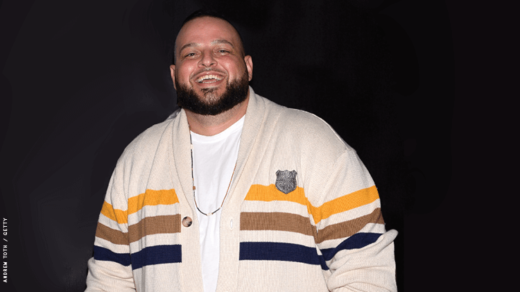The ERA Is Queer, and It’s in Joe Biden’s ‘Agenda For Women’
Last fall I stood on a stage in Salt Lake City where Equality Utah, the state’s largest LGTBQIA advocacy group, announced its support for ratification of the Equal Rights Amendment with great fanfare. ERA advocates in the state had worked long and hard to widen their coalition and make it inclusive. Many in the audience were shocked, thinking of the ERA only as a retro throwback — but politically it’s back with a vengeance. Just last week presumptive Democratic nominee for president, Joe Biden, put the ERA front and center in his newly released Agenda for Women. With this step, the amendment rises again to prominence on the national stage, and given the recent Supreme Court ruling banning discrimination against LGBTQIA people in Bostock v. Clayton County, it’s more relevant now than ever to the queer community.
Proposal and ratification of the ERA are almost 100 years in the making — nearly as old as (mostly white) women getting the vote. But today it remains as popular as it was when hundreds of thousands of people were marching in the streets chanting “E-R-A! E-R-A! E-R-A!” in the 1970s. According to a new Pew Research Center survey, about eight in 10 adults in the U.S. currently say they want to add the ERA to the U.S. Constitution. The amendment has widespread support across all genders and both sides of the political aisle — the majority of both Republicans and Democrats back it.
As advocacy for the ERA ramps up and the end of this century-long quest for ratification seems near, the question that looms large is, equal rights for whom?
Though we were envisioned as its traditional beneficiaries, the word “women” is not anywhere in the text of the ERA. It was written by suffragist lawyers Alice Paul and Crystal Eastman following the ratification of the 19th Amendment giving women the constitutional right to vote. The main clause reads simply, “Equality of rights under the law shall not be denied or abridged by the United States or by any State on account of sex.” Today, this language is broad enough to protect all marginalized genders and sexual minorities, not just cisgender women.
Conventional wisdom says it’s wrong to “make it about you” in most situations — but, in the case of constitutional protection, LGTBQIA people definitely should. Prominent anti-ERA activist (and central character of Mrs. America) Phyllis Schlafly certainly did. She often warned that the ERA would promote and legitimize homosexuality and would lead to the legalization of same-sex marriage as well as destroy traditional families. Modern antifeminist opponents of the ERA still attempt to use these same anti-LGTBQIA scare tactics to discredit the amendment.
Since the opposition is making it about us, we should too! Virginia has now ratified the ERA, making it the last state needed for ratification, according to Article 5 of the U.S. Constitution. Trans women like state legislator Danica Roem led the way on ratification in Virginia, advocating for the amendment boldly and even getting the text of the amendment tattooed on her arm to celebrate. That is the kind of zeal we need for the ERA in the LGTBQIA community. Other queer activists, like Charlotte Clymer, are also fierce advocates for ERA ratification. Thanks to their work and the work of countless others around the country, we are on the precipice of final ratification and the ERA finally being integrated into the Constitution.
Last year I attended the first congressional hearing on the ERA in 36 years, and I was thrilled to hear the witnesses testifying explicitly address transgender inclusion. All three witnesses in favor of the ERA — Oscar-winning actress Patricia Arquette; Nevada State Sen. Pat Spearman, who is a lesbian; and Kathleen Sullivan, the former dean of Stanford Law School — defended trans women and stated unequivocally that the ERA will cover all people. This is important because the congressional record helps define what the ERA will mean in the future and how the courts will interpret it. The opposition will try to say, “The ERA isn’t about queer people.” The courts will ask, “Was it envisioned by Congress that transgender and LGTBQIA people be included under the amendment?” The congressional record will help us say, “It is about us and it always was!”
Sullivan, a noted constitutional scholar who has argued cases before the Supreme Court, went through the legal arguments. “The ERA will prohibit discrimination on the basis of sex,” she said. “If there’s discrimination against LGBTQ people on the basis of sex, then it’ll be covered. I believe the textual reading of the amendment does apply to sexual orientation and gender identity.” A year after Sullivan testified, Bostock v. Clayton County was decided, and the Supreme Court said the inclusion of “sex” in Title VII of the Civil Rights Act protects employees against discrimination because of their sexual orientation or gender identity. Trans litigators like Chase Strangio led the charge on this case — slowly but surely making the Constitution about us.
What the Supreme Court decided in Bostock — that the term “sex discrimination” includes both gender identity discrimination and discrimination on the basis of sexual orientation — is an interpretation of a federal law that can be altered or repealed at any time, depending on who’s in charge in Congress. It leaves us vulnerable. A constitutional amendment, on the other hand, is far more difficult for legislators to erase or change.
The ERA would mean that judges would have to apply the highest level of scrutiny in challenges to the many state and federal laws that deny us equal access to public accommodations, housing, employment, and education, among other things. The Equality Act is a proposed law to address some of these issues, but again, it is a law, not a constitutional amendment. Instead of passing piecemeal laws and having to pray for favorable decisions from unreliable Supreme Court justices, we can change the very document they are charged with interpreting.
One man stands in the way of finally integrating the ERA into the Constitution and getting the permanent protection we need: Donald Trump. The Trump administration opposes certifying the ERA, and the Office of Legal Counsel in Trump’s Justice Department has issued a memo to that effect, citing the 1982 deadline set by Congress for ratification. Despite executive branch opposition, all the requirements for a constitutional amendment have been met, and there are two avenues we have left to get the ERA actually into the Constitution — by hook (litigation) or by crook (legislation).
An important lawsuit has been filed by the most recent states to ratify the ERA: Nevada, Illinois, and Virginia. Many women and queer people in the legal community, including myself, have stepped up to support the lawsuit seeking to force the Trump administration to implement the ERA, and we hope for a favorable outcome in that case. Another avenue to try to get the ERA into the Constitution is through Congress. The House passed a bill to eliminate the original deadline on the ERA in February of this year. If we are able to flip the Senate and vote more pro-equality candidates into office in November, we can get the Senate to pass the deadline elimination bill too. It’s already got bipartisan support, but Senate Majority Leader Mitch McConnell is blocking the ERA from getting to the floor.
It’s up to us to make it clear the ERA is queer. The LGTBQIA community has got to be more vocal in its support and work to get the ERA finally integrated into the Constitution. We must get the protection and recognition that well over 50 percent of the population deserves — for women, girls, nonbinary folx, our transgender siblings, and all marginalized genders and sexual orientations.
The ERA is an amendment for our times. More LGTBQIA organizations need to explicitly embrace the ERA, like Equality Utah has in the reddest of red states. We need to break beyond the narrative that limits equality to one gender and make it about us — all of us.
KATE KELLY is a human rights attorney and national ERA advocate. Follow her on Twitter @Kate_Kelly_Esq.
Original Article on The Advocate
Author: Kate Kelly






